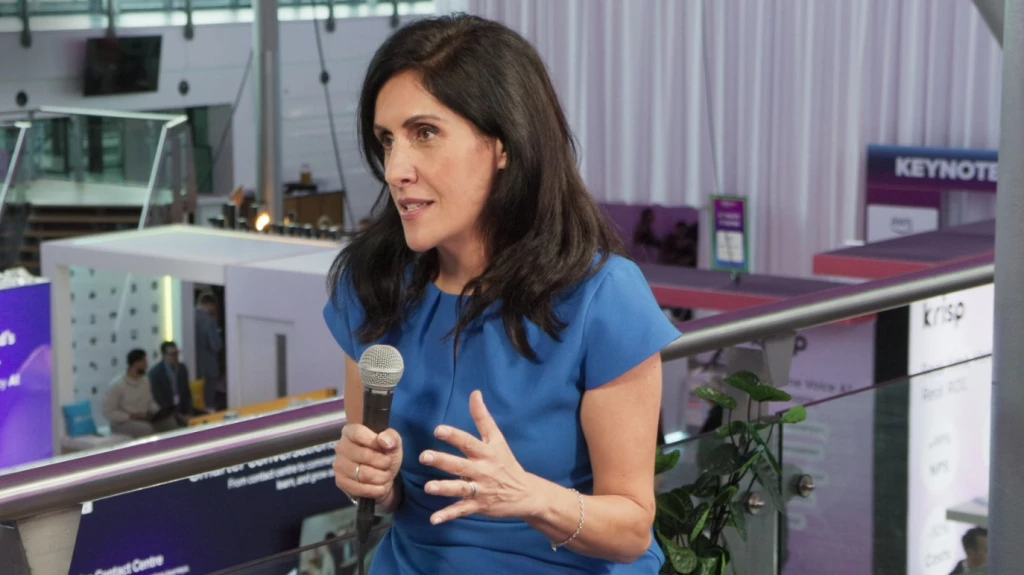How to improve the customer journey with cutting-edge contact centre solutions
Add bookmark
In today’s fast-paced, customer-centric landscape, delivering seamless support is not just a competitive advantage — it’s a necessity. As consumer expectations continue to rise and technology evolves rapidly, businesses must strive to provide consistent, high-quality experiences across every touchpoint of the customer journey. However, just 11 percent of customer management leaders say their contact centre is fully integrated with other departments. While the contact centre is often the first touchpoint between customer and brand, challenges with data, communication and disconnected channels lead to frustrating experiences — for both the customer and the agent.
Let’s take a look at these issues in more detail, and how to resolve them.
The challenges of fragmented customer support operations
In our State of Customer Management in 2025 report, we surveyed more than 100 executive-level members of the CCW Europe community. Less than half (46 percent) said they would rate their customer experience across different channels as consistent, with only 5 percent describing it as very consistent. The top challenges that emerged were data fragmentation (52 percent) and a lack of integration between systems (52 percent), making it difficult to create unified customer profiles.
Without unified data management, customer information can be incomplete or outdated, resulting in poor decision-making and leading to inconsistent customer experiences where they may encounter repetitive questions and mixed messaging. All this can result in damage to the brand’s reputation.
Poor communication between departments exacerbates this problem, and slow response times and poor customer experiences have an impact on employees, too, as struggling to find accurate information quickly can impact both productivity and morale.
Another challenge identified by the survey is legacy technology, cited by 42 percent of respondents. If we consider the multiple channels a business may use to interact with its customers — across its website, in-store, mobile apps, customer service helpline and social media — a solid data strategy and robust technology are essential to ensure agents have the most up-to-date consumer information.
Other issues highlighted were having limited customer insights, implementation and management costs, a lack of internal expertise, and maintaining data privacy.
So how can CX leaders resolve these challenges?
Delivering seamless customer experiences
Breaking silos, better collaboration across teams and unifying support functions are essential to delivering a seamless customer experience. The steps below can help businesses enhance customer interactions and foster a culture of collaboration.
Adopt an omnichannel contact centre solution
As mentioned above, businesses are juggling more channels than ever before, and moreover, customers now expect support to be available through multiple touchpoints, whether it’s voice, chat, email, social media, or SMS. Managing these channels separately often results in inconsistent customer experiences and slow resolutions.
By adopting an omnichannel solution, customer interactions can be centralised into a single platform, making it easier for agents to manage and respond. This preserves interaction history across channels, ensuring that customers don’t have to repeat themselves.
As an example, a global solutions and servicing centre with over 170 service experts operating in 95 countries faced problems with siloed working, which was leading to unnecessary backlogs. To address this, it needed to update its ticketing platform and link it with their social media channels to create a unified customer journey, by collating, categorising, and managing all incoming calls, emails, social media, and digital chats into one system.
By implementing a cloud-based omnichannel solution, it was able to better prioritise service requests. One way the software was able to achieve this was by having specific keywords to trigger higher priority ratings for requests.
Improve your data-sharing strategy
One of the biggest challenges in delivering a seamless customer experience is the lack of real-time data sharing between departments. Modern contact centre solutions address this challenge by providing a unified view of data through customer relationship management (CRM) systems. Agents can then have access to the entire customer journey in one location.
This enables agents to view comprehensive customer profiles, share data across teams, and make informed decisions quickly. And deploying a solution that includes automated updates ensures that customer information remains current and reliable.
Leverage AI-driven customer support
According to our State of Customer Management report, 83 percent of respondents believe AI will play a significant role in their CX transformation efforts over the next one to two years.
Additionally, 55 percent say they have achieved basic maturity – implementing the type of AI that focuses on making simple interactions and transactions smoother and eliminating pain points for both their workforce and customers. However, only 2 percent have implemented AI for complex customer journeys across entire workflows.
These figures demonstrate that while there is a general acceptance of the power of AI, few companies are realising its capacity to transform core business functions. Embedding AI within contact centre solutions helps businesses achieve much faster response times, by deploying chatbots and virtual assistants to handle common inquiries, freeing up agents for more complex tasks.
More advanced solutions can help identify potential issues before they escalate, leveraging predictive insights that can then allow for proactive support. And furthermore, solutions can monitor customer sentiment in real-time can guide agents on how to adjust their responses.
Empower your employees
Transforming customer support also involves empowering employees, and this can be enabled with technology. For example, unified dashboards can provide agents with a single interface to access all necessary data and customer interactions. Some contact centre solutions even provide real-time coaching, offering guidance to agents during live interactions. This coaching can give them tips based on customer sentiment metrics, for instance.
When employees feel supported and engaged, they are more motivated to deliver outstanding customer experiences, fostering long-term relationships and customer retention.
Build internal expertise
Last but not least, adopting new technologies requires education. Pharmaceutical giant Sanofi has deployed a strategy of embedding digital technology and AI across every department. Joanne Kennedy, Chief of Staff to the Executive Vice President of R&D explains that the company has a mix of new people joining who are all digitally native, working closely with more seasoned experts who are not. “There are numerous ways we’re educating our people – through mentoring, training, and exposure. And of course, sometimes you simply need to have people jump in at the deep end to embrace the necessary learning.”
Delivering seamless customer journeys is not an option, it’s a strategic business imperative. While rising customer expectations are a concern for any business, advances in technology mean that breaking down silos and improving data-sharing no longer have to be challenges. The combination of smart solutions and empowering employees with the right technology and training will ensure businesses stay ahead of the competition and achieve long-term success.
































